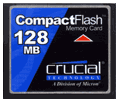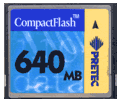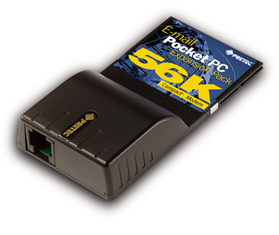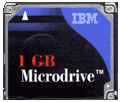For a start - a little personal. I often have to travel around on business. And these trips I really do not have the usual equipment - computer, scanner, printer. This problem is resolved after the acquisition of laptop and handheld computer, but only partly. Even the "packaged" technology for most domes I do not feel confident. Sometimes you find yourself in such places, where not so much about the internet on a regular phone, few have heard. A work to do (except for lack of money and most have to forget about the virtues of civilization). Of course, you can pick up a paper notebook and pencil. Tolstoy and Chekhov did not have computers (which, incidentally, explains the absence of figures of this scale in modern literature). But you get used to good quickly. After tasting one laptop keyboard or falling asleep a couple of times under the unearthly glow of the screen handheld computer (laptop to read it - and that's it), waive those electronic toys do not like. And instead of productive start to think about how it would be cool to have on hand portable equipment. Yes, it is not dragged down to the hands (and ideally - the pocket and wallet). Yes, that functionality is not inferior to full-sized counterparts. And that cost is not prohibitive, and as a human ... So what's the deal? What is there to dream? It is necessary to estimate their needs, align them with their capabilities, and - go to the store to shop. Yet there! Is wanted.
Flash memory cards
Assumed that the memory card are available only for the various gadgets - from digital cameras to handheld computers. Meanwhile, it's a universal device for storing and transferring large volumes of data. Moreover, it is very reliable (at present the most reliable) external hard drive, which in many ways to give odds to any disk and the more tape device.
 |
The tiny size of flash card memory to 64 megabytes or 128 is able to accommodate arbitrarily voluminous results of work per week, month or even year - unless of course you do not do graphics or digital photography (here the volume of stored information, and with them the personal archives, increase the order). It's almost perfect floppy, not afraid of the magnetic fields and mechanical damage (to a certain limit, of course). As with any electronic device, flash memory is subject to malfunction. Here too there are "broken sector, both on the hard drive. But the process of failure of memory does not develop. "Broken" hard drive - a dangerous thing, that and look, you will lose all saved up on your hard drive for years. Flash memory is a closed cell - just a card with a limited capacity. And there are these faults are much less likely than an accident of hard drives. The theoretical lifetime memory card - about ten years (without loss of information). Almost - more (difficult to verify because the technology is young enough). But this is so, one of the optional details of the use of flash memory cards ... Until recently, the high cost of flash memory is not allowed to treat it differently, as a specific drive for portable computers. But a digital camera, MP3 player or PDA is not sold "nekompyuterizirovannymi" users - or a mobile extension to a personal computer loses its meaning. Using a digital camera with removable memory card, it's silly not to use it, that same card and the computer. At least to try - why not? In addition to limited compared to modern disk drives, capacity and low speed (comparable to the rate of a leisurely drive CD-ROM), no other reason to refuse to work with memory cards as removable storage devices do not. In contrast, a memory card in a pair with a laptop computer - the ideal solution for backup your most important data in the "field" conditions. Imagine an external drive ZIP, CD-RW, HDD - with power and with a bunch of wires. No bags will not be enough to build this economy and no hands to dragged to the plane, train or bus. A flash memory card will not be a hindrance.Together with any adapter reader is ultraportable devices. And if the reader is made in addition to the format PC card - something ultraportable in the square.
 |
Regarding the choice of flash memory cards, there is a ball ruled a device in the appendage which you received the card itself. That is, if the camera supports the card format CompactFlash, then the rest of the technique is better to choose exactly under this format. Benefit of PDAs (class Pocket PC) is often supplied slot CF. And together with them, and many digital cameras - Canon, Nikon, Hewlett-Packard (read - Pentax). Least likely to apply to the CF card players MP3 (more accurately - is hardly used), but the owner of this PDA neither cold nor hot. Pocket PC machines are able to play MP3 no worse than any "fleshovogo" player.
 |
Sharpen the focus on maps of any format is not worth it. All formats are good. For example, Memory Stick from Sony feature small size, durable plastic constructs (not bent, not broken), electric write-protect switch and practical realization of the contact group. The latter is important. On the go awry insert the card into the machine - a piece of cake. Meanwhile, the mating connector (the one that is installed in the camera body or PDA) Card CF - a set of contact needles. Hurt them very easy, to repair without disassembling the computer or camera is very, very problematic. But there is the CompactFlash and one distinct advantage. This is the way, the cheapest and most popular among the manufacturers of miniature peripherals format. By purchasing a handheld computer equipped with a slot CF (eg, the same Casio BE-300), you get as a bonus nebesplatnogo sumptuous selection of peripherals implemented in this format. A user laptop or desktop computer an important addition to the CF card reader will be of any design. With the help of map will turn into a miniature hard drive, which is nothing to break. By the way, a couple of "memory card - reader" it is more convenient fashion now USB-shnyh charms flash memory. Card you easily rearrange your computer to the camera or PDA. Where to connect this pendant? Just hang up the keys.
Pretending to be big
In format CompactFlash (as discussed below will primarily about CF) is a great feature. In addition to memory and power supply circuits, a map of this size built-in controller. If the slot PC card (PCMCIA) laptop can be regarded as a portable version of the 32-bit bus PCI, the controller flash memory cards CompactFlash - as a miniature interface implementation ATAPI. Therefore, any memory card inserted into the adapter "PC card - CF" is recognized by the Windows operating system automatically, in a "hot" mode does not require installation of any drivers "from" and denoted in the system as an ordinary removable disk drive. It's so convenient that, having tried a couple of times, you cease to languish with the programs of synchronization between PDA and desktop machines, and copy everything that does not require any special installation - electronic texts, data, pictures - directly. Another problem - Miniature connectors for a telephone line or network cable. In the maps of the PC card is necessary to go on maneuvers, using different "tails" - Dock adapters. Same situation with miniature cards CompactFlash, although shaped connectors - for connecting adapters themselves - more brittle than connectors adapters PC card. All these facilities to work with portable peripherals does not increase, but the small size cards with interest cover any insurmountable disadvantages. Imagine a small pouch (pocket computer bag in a box - anywhere) fits, almost the entire periphery immediately for laptops and PDAs.
 |
Which peripherals? Network card (a couple of cards - to connect a laptop with a PDA, if to solve the problem of drivers), modem (for Pocket PC, and possibly for a laptop, if portable machine does not have built-in modem), satellite navigation module GPS (also works with PDAs and notebook), wireless communication module supporting GPRS (turns into a powerful handheld communicator GSM), wireless interface card Bluetooth. A list of more than impressive and far from complete. But two problems remain unsolved. The first, already indicated by us, driver support ... What is the use of extraordinary abilities Pocket PC Casio E-300 to work with any device USB (keyboards, modems, printers and so on), if it is not very attractive opportunities appropriate program support? Very often peripheral to the form factor CF, is designed for PDAs, does not work on your laptop, and vice versa, the device form factor PC card does not work on Pocket PC (even using a special "jacket" for the cards in this format). The second problem - the high cost of miniature devices, often from a practical point of view, unjustifiable. But here everyone decides for himself.
Eye Eye da
Format CompactFlash nice yet another device - mikrovinchesterom IBM Microdrive (and similar devices from other manufacturers). That is truly - thing, the possibility is hard to overestimate. Precision technology that mikrovinchester Microdrive fits into the body CF Type II (different from Type I only thick), implies the vulnerability of the drive, sensitivity to vibrations and shocks. But there it was! Microdrive is one of the most secure portable hard disk drives, it will handicap even the increasingly popular ZIV, despite the significantly smaller size.
 |
Frankly, in recent years, IBM is not very pleased with the reliability of their hard drives. For example, on my laptop ThinkPad hard drive had to be changed under warranty, although the machine itself any raises no objections. It is noteworthy Microdrive, which became apparent success of the company. Opportunities mikrovinchesterov fully appreciate the users of digital cameras. The huge size of image files high resolution restrict the autonomy of the camera. The problem of lack of capacity batteries (batteries in cameras sit disappointingly quickly) added to the problem of lack of memory ... Miniature hard drive eliminates the problem completely. On gigabyte Microdrive (the most popular models, despite the high cost) can fit hundreds of images of maximum resolution and thousands of images of low resolution (relative, of course). Anyway, in a long creative journey to bring a laptop (because of his "big" hard drive) is not necessary. A somewhat different situation with handheld computers. No, it's not in high energy consumption Microdrive - still mikrovinchester better used for storage of large quantities of documents and graphics, downloading them to your handheld machines, as necessary, and not to run programs (they, incidentally, for Pocket PC is not so much to use gigabyte drive). Problem - the hardware incompatibility. From model to model Hewlett-Packard Company provides its Jornada handheld Pocket PC class slots for CF Type I. That is, inserting a Microdrive is physically impossible. Moreover, any other PDAs in this class work with the Microdrive - a plug (worn) "jackets" or through the built-in slots. This, of course, on the iPaq and Cassiopeia, who in this respect surpass Jornada. Just think, this is the same car hi-end, which cost hundreds of dollars! And now this unfortunate limitation. Hewlett-Packard does not support the manufacturers of flash memory cards? But what has this site? Confusing ...And for the owner of the laptop mikrovinchester - is the fastest and most reliable means to transport a large number of images from a digital camera to the computer memory and, moreover, an excellent tool for backup of important documents in transit. And, just where the backup is really necessary - in unpredictable, fraught with breakdowns by various operating conditions "which have" ... If the disk drive in a small form factor, the prerogative of the format CompactFlas, then another popular addition to the handheld computer (and only to him) - Join the digital camera module - available in various formats. In particular, Sony releases photo module format Memory Stick. Structurally attached to the handheld camera - is coinciding with the dimensions of SD Memory Card, ending in a cylindrical (rotary) heads with built-in lens. Card is inserted into the slot, and Pocket PC into a full-fledged digital camera. However, the advantages of such a symbiosis is more than doubtful. The tiny body can not build a high-resolution sensor module and the considerable physical size. Hence, the main limitations - resolution of 350 thousand pixels (pictures 640x480) sensor and ISO between 50 and 100 units of ISO. In the merged cells have no built-in flash, no auto-focus mechanism - due to the use of short-optics there is no special need. The only advantage - use as a viewfinder screen PDA. But when filming on the street it turns into a disadvantage: a color-screen handheld little that can be seen. Even modern reflective displays in the practical application of losing the simple optical viewfinder, forcing the photographer was staring intently into the screen image, rather than concentrate on composition. There is a small attachable camera and non-obvious drawback - photo module occupies a slot for memory cards. As a result, to preserve the image is accessible only memory, and its machines with Windows CE-based chronically underfunded. So what comes out, attachable camera - pampering? In general, yes. But the pampering fun and enjoyable. How many of us, the users PDA, got this wonderful assistant guided only by considerations of expediency? Incidentally, the same applies to any miniature periphery (and, incidentally, to laptops). The test of "like - not like" is there in the first place. And it's very good, or computer routine would seem to us gray and flat. The authors, translation:
Nikolai Yakovlev




